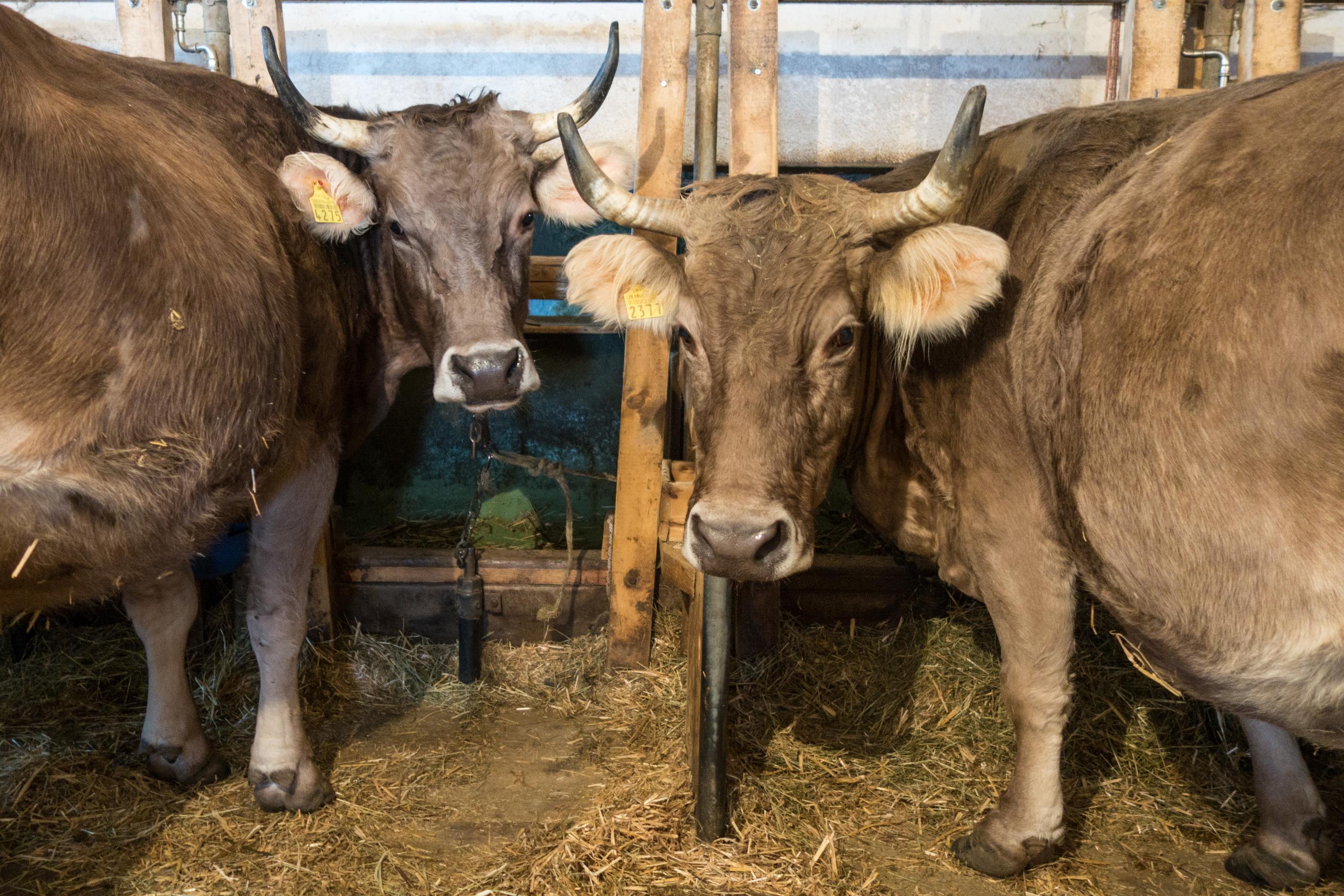
Fat cattle force farmers to call for ‘new model cow’

Many Swiss cows are getting too heavy for soft Alpine pastures, too wide for their stalls and too gluttonous for their owners. An interest group is now calling for cows to be bred that are smaller, lighter and more easily sated.
Some cows are more than 1.60 metres (5’3”) in height and tip the scales at more than 800 kilograms (1,760 pounds).
“Every year cows are getting three millimetres taller on average – this trend must be stopped,” said Markus Gerber, president of the breeders’ association SwissherdbookExternal link.
Michael Schwarzenberger, a teacher of animal husbandry at the agricultural educational and advice centre in Arenenberg, northeastern Switzerland, explains that many stalls were built 25 or 30 years ago based on how big cows were at the time.
“For today’s cows it’s often a bit tight, especially when they lie down. What’s more, the heavy cattle trample over the fields and meadows and churn them up. And not only do they need more fodder to produce the same amount of milk, they also consume more energy and protein, which increases their concentrated feed requirements,” he said.
Markus Gerber explained that when it came to insemination, breeders look for bulls that promise udders that are as productive as possible. “But this automatically means larger animals. Less importance should be placed on this aspect of breeding,” he said.

More
Cows continue to suffer for ‘beauty ideal’
‘Model cow’
Switzerland’s almost 700,000 cows produce on average 7,500 litres (16,500 pounds) of milk a year – double the amount produced in the 1960s. “Elite cows” can produce around 12,000 litres, according to Schwarzenberger.
“Our model cow is one that remains productive and healthy and that turns the staple food that grows here – grass and maize – into milk as efficiently as possible and with as few antibiotics as possible,” he said.
The interest group New Swiss CowExternal link therefore recommends using bulls for insemination that promise offspring that are smaller but more productive and healthier: a good weight, it said, would be 500-600 kilos with a height of 1.40-1.50m.
Hans Rüssli, spokesman for the Swiss Farmers’ External linkAssociation, said Switzerland had decided in the 1990s to prioritise ecology over optimum performance. He explained that since then the motto has been “smaller animals with a smaller appetite”.
“But the farmers themselves decide what makes economic sense,” he said.

More
The man trumpeting in favour of cow horns

In compliance with the JTI standards
More: SWI swissinfo.ch certified by the Journalism Trust Initiative




























You can find an overview of ongoing debates with our journalists here . Please join us!
If you want to start a conversation about a topic raised in this article or want to report factual errors, email us at english@swissinfo.ch.